The 50 States Project is a yearlong series of candid conversations with interior designers across the country about how they’ve built their businesses. This week, Charlotte, North Carolina–based Cheryl Luckett of Dwell by Cheryl tells us how she turned her blog into a business, what pieces of her corporate life are a help or a hindrance, and how she gets clients comfortable talking realistically about what their design dreams will cost.
What are your earliest memories of being drawn to design?
My childhood bedroom. I remember it with great clarity: yellow JCPenney bedspreads with ruffled edges, calico-print wallpaper, Raggedy Ann and Andy prints on the wall, ruffled tie-back curtains. I loved being in it, and I was super meticulous about it. I don’t know that I understood how the color and the decor and the frills made it my happy place, but that’s probably my earliest memory of really caring about my environment.
Did you get a lot of autonomy creating that space for yourself as a kid?
You know, I don’t recall—I’m going to say probably not. I don’t even remember when that room was created, so I may have been too young to remember having input.
But it was a sanctuary.
Oh, yes. When I had slumber parties, shoes came off and they needed to be lined up on the wall in an aesthetically pleasing manner. I was serious about it.
So in some ways, all the signs that this would someday be your career were already there.
Oh, yes. They were, and they got stronger, although I totally ignored them. In college, I had the room that the dorm director toured prospective students through. This was long before Target had a dorm line and all that stuff was even available. I used to collect money over the summer from my roommate so that I could update our room—I would buy the comforters, and then we would go to the fabric store so that my grandma could make coordinating throw pillows and a valance for the little window. It was so put together and coordinated, at a time when that wasn’t a thing, that the dorm director was like, “When we have tours, can we bring them here?” She’d say, “Hey, we’ve got somebody coming at 10,” and I would be out to class, but I’d have soft music playing in the background.
You were doing it before you were doing it. Did it ever occur to you then that design was a job or a vocation that you could pursue?
Sadly, yes. I went to school at the suggestion of my mother, a high school guidance counselor, to pursue a degree in nutrition and to become a dietician. In the school I was in, and in most land-grant universities, that program is wrapped within home economics, though at the time, it was called family and consumer sciences. That department included the disciplines of early-childhood education, fashion merchandising, interior design and nutrition.
That’s a really interesting combination.
It’s ironic—they’re all the things I love now. So I was in the right department; I just was in the wrong concentration. I took interior design classes—it was a requirement. Even after I took that initial class—I’m a Type A, people-pleasing, do-the-right-thing kind of girl, [and] I was on a different track, and it didn’t occur to me to follow a passion. It was like, No, you signed up to become a dietician, so that’s what we’re going to do, and we’re going to do it well. We’re going to finish what we started, Mom will be happy, and all will be right with the world.
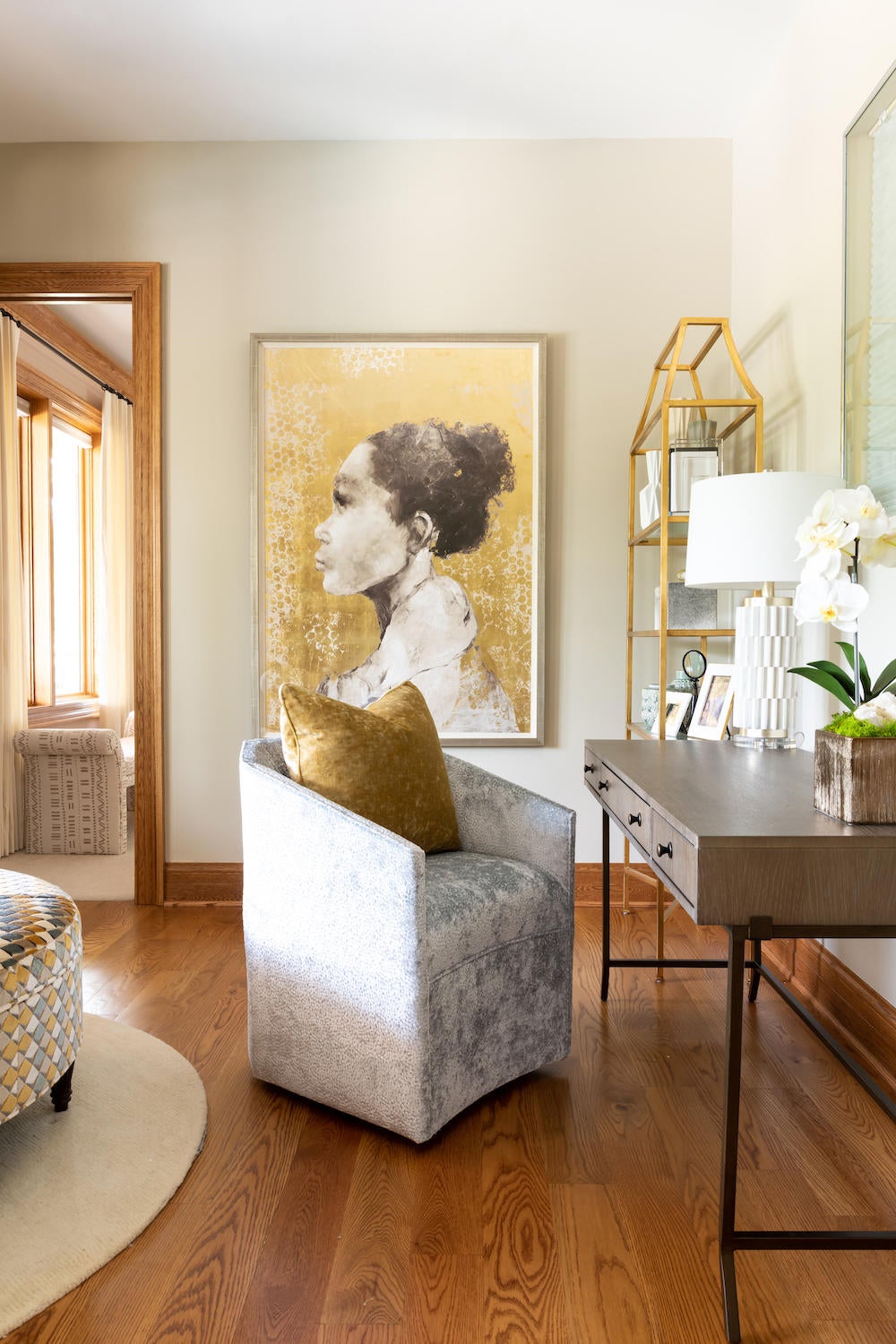
You were a dietician for a long time, too.
A long time—and I liked it. I worked for a Fortune 500 company that did contract food service management for schools, hospitals, prison buildings—everywhere. I worked in the K–12 division, planning school lunch menus. I was there when we made school lunch healthy, pre-Michelle Obama and the Let’s Move campaign. It was exciting. I had the PalmPilot and the business cards and I was traveling. I had a dream job for a dietician during a time when that profession was gaining ground. I never was passionate about nutrition, though. I would go to conferences and sit next to the other dieticians, and they would be so excited about the latest and greatest. I would be there doing my part, but it didn’t light me up like it lit them up. I knew that very early on.
Did that strike you as a problem, or was it just a fact?
It didn’t for a while because I was still young—I was still in the throes of being excited about having a career, a corporate card, status at the Hilton. It wasn’t until after years of doing that, that I realized that something else could be possible.
Did something happen that inspired you to change course?
I got a little burned out after 10 years, so I reached out to one of my mentors at the company, who was the director of diversity and inclusion. He said, “Have you ever thought about doing something different?” I’m like, “I don’t know—different like what?” And he said, “Well, I have a job opportunity. It’s a diversity role.”
I’ve always been involved in that as an extracurricular within the company, but obviously HR was not my training. But he said, “I don’t care. You’ve been at the company a long time and you know it as well as anybody, and I can teach you the rest.” At that point, I knew I just needed to come up the road. I was gone three days a week and had no life. Ultimately, I ended up leaving dietetics behind and moving to the corporate office, in a diversity role in the company’s HR department. It allowed me to slow down a little bit. I bought a house in Charlotte, I started to knit. And now I’m doing this other role, which is a lot more of a 9-to-5.
Did you like it?
Not initially—think of the topic, right? I went from being a subject-matter expert in a company where what we do is nutrition to being a part of a support team that not everybody views as valuable. There was some discontentment in the very beginning. I had been doing what I was doing for a decade, so there was an adjustment period. What I did like about it immediately is I got to leave—at 5 o’clock, I could leave the office and nothing was going to fall apart, which allowed me to start building some other interests. I bought this house—I had been in a townhouse before, but this was my first single-family home with a yard—and [I learned] to plant flowers. I really started to go down the rabbit hole and do it.
After being in that HR role for a bit, I started to get tapped for opportunities by senior leaders. They were like, “What do you want to do in your career? We’ve got this director role we could position you.” But none of that was sounding appealing, and that’s when the real disconnect started. I was getting to my mid-30s and I was feeling like there’s got to be more.
When you start thinking, I’m supposed to be excited, but this “opportunity” sounds awful.
Yes. I started to have an internal struggle—I didn’t want to be that, and meanwhile, I’m cultivating this beautiful home. I love entertaining. I’m having parties, and the people coming over are like, “Oh, my God, your house is so lovely. You should be doing this for a living.” I was dating a guy who was like, “You have far too many talents to be working for somebody else.” I was like, “You are absolutely insane. I am not leaving my cushy job with benefits. No way, no how.” But all these seeds were being planted, my discontentment was growing, and I had time on my hands. So I said, “Maybe I’ll pick a little class at the community college and learn a little bit more about design. What can it hurt?”
I asked a lot of designers around town who had a good program, and they all pointed me to our community college, CPCC, which I can now vouch for. Basically the rest is history: The next thing I know, I’m signing up for class after class after class—one at a time, every semester—and I’m falling in love with design.
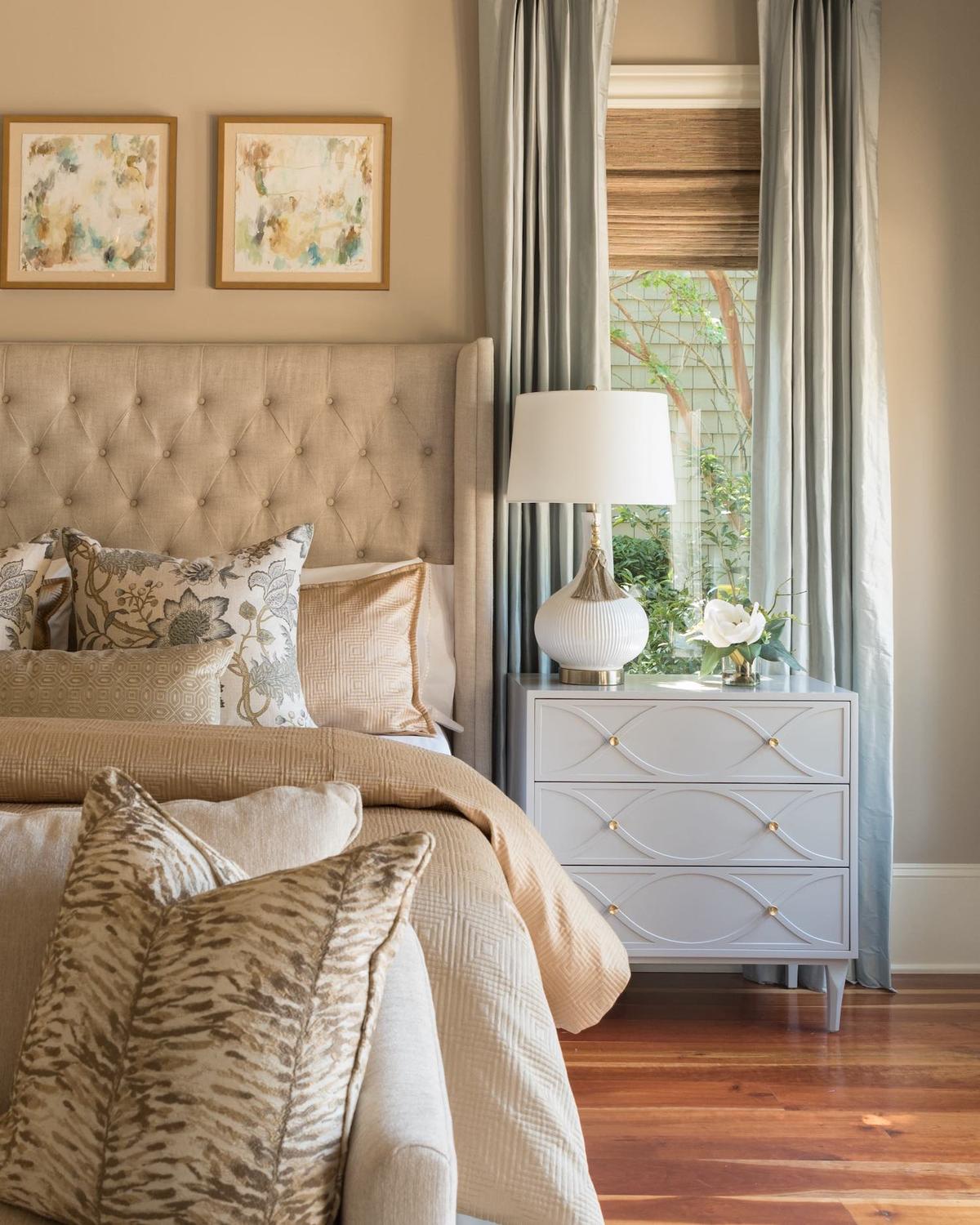
How long did you take classes for?
Six years.
And you were still working your full-time job the whole time?
The whole time. But in my very first class, I met a girl who had just graduated from high school—because it was junior college, right?—and she was like, “You should start a blog.” So what did I do? I started a blog. It was very Type A: The blog needed a name, and a blog designer to set it up, which meant I needed a logo and some colors. And I mean, if I don’t have a name, I need to license a name—let’s go ahead and get a business license, just so we can make this thing legit. Let’s buy the domain.
For your first blog?
I knew enough from being in corporate to do something that looked like this, so I just built it. I started blogging three times a week, and I made a big deal out of it—I pinged everybody I knew and did a whole big launch. People started reading the blog, and then friends, family and church members started reaching out with things like, “Hey, my kid’s room needs a refresh.” Whatever budget, it didn’t matter. I mean, I had a full-time job. It was just playing—but it kind of looked real because I knew enough to know that if you’re going to do it, you should do it right. So I started decorating these rooms, and I was like, “This is pretty good. Let’s hire a photographer.” My very first project, I hired a photographer. I think my budget might’ve been $500, but it looked good on film, so I put it on the blog and someone else was like, “Can you come over to my house and do that?”
Were you charging for that?
Oh, yes, I was charging from day one. I was 35 or 36 years old, and I wasn’t doing anything for free. I was still going to school at night, and I realized that I was building my portfolio, but with no plans other than just blog content. I did that for two years. By that time, I was doing a lot of thrifting and revamping furniture. I had an awesome upholsterer who I still work with and we were creating things out of nothing. People were reaching out—our local Habitat hired me to be one of their influencers. I was like, “I’m getting partnerships. What am I doing? Where is this going?” I had a come-to-Jesus moment over the holidays where I realized, “I think I might want to make this a career.” That was 2013. I asked myself, “How long would it take me to feel comfortable to leave my security?” Because there will be no jumping off the side of the cliff—I’m single and I’ve got to pay my mortgage, so this is not a joke.
Where did you land?
Most of the angst was around money. I felt like I could probably get a solid plan in place and feel comfortable in three years. Now, for me, that sounded like nothing. For other people who have been working in the creative space—I remember telling somebody that, and they were like, “Are you leaving in 36 days?” I’m like, “No, I’m leaving in 36 months.” I called it Project 36, my 36-month exit strategy.
What all did that entail?
My first stop was a financial planner in January 2014. I said, “I want to leave my job in three years. What do I need to do financially?” She laid it all out on the table. She said, “Let’s start chipping away at this goal,” and that’s what we did. But it was really multipronged, because it was the finances, but also marketing and brand-building. I had a strategy to address each of those areas over those next 36 months.
Time goes on, with me chipping away at the goal, stashing money away, paying bills off—whatever she’s telling me to do. I also continued to do bigger projects and photograph them. I was going to conferences and meeting new people, I continued to blog, and I was going to school. About halfway through that, I realized it was all going to sync up, and I was going to finish school right at the end of that 36 months. And I knew it was kind of God-given that the 36 months was right. And on December 30th, 2016, I walked out and never looked back.
That’s amazing.
Because I use social media to build my business, there were so many people who were on the journey with me, and so I made it a thing. I wrote this long blog post about telling my parents and putting in my resignation—about being nervous about that, and printing it on resume paper. They all bought into this idea: “Oh, my gosh, she’s really doing it.” Now, four and a half or five years later, those same people are still invested. They remember when I walked out of those doors and did the slow-mo video. That was also partly about my accountability, putting it out there. Knowing that people were watching—that people were wanting to do the same thing and I was their inspiration—fueled me.
Is that social media community still an important part of your business?
Absolutely. Obviously, social has changed over the years—especially who’s on Instagram. So now I get a lot of clients from Instagram because it’s no longer just kids, it’s almost everybody. Every brand partnership—honestly, every magazine I’ve been in, every product line collaboration—has all stemmed from my activity and engagement on social media.
Do blogs still have the same significance today?
That’s a good question. Ask me the last time I blogged! I think it was May 30th of this year—which is not horrible, but I’m supposed to blog at least once a month, and I never get to it. Honestly, I was never a blogger who had a huge following, and I never did ads or anything to monetize my blog. It was a way for me to chronicle my design, share it on social, and get people to notice me—never a revenue generator—so I probably treated it very differently from the very beginning.
Maybe this is not true for everybody, but I don’t feel like people are as interested in reading a long post today—in taking the time to go off of whatever social media feed they’re scrolling through to read your posts. They want the photo and the highlight—that’s what I find. So I don’t put as much energy into the blogging.
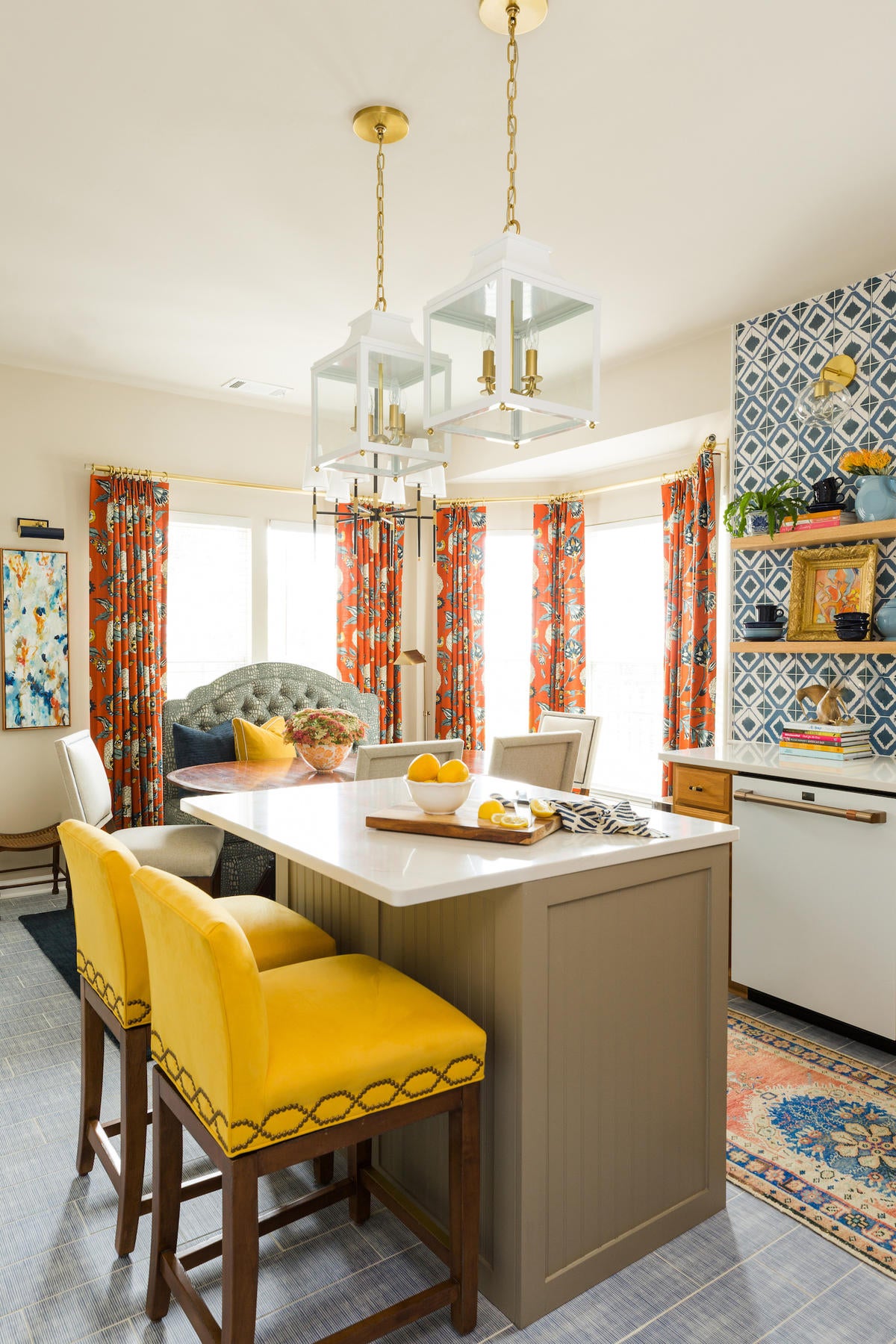
Fast-forwarding to today, what does your business look like now?
My business has evolved since I went full-time in January 2017. Obviously, it was a paradigm shift to go from side hustle to full-time. They are two different things, and I recognized very early on that I needed some guidance. I hired a coach, and I worked with her for the better part of a year and a half in group and individual settings. She really helped me to level things up, and to realize that you have to be really conscientious of who you’re attracting, what you’re putting out there, and what you say yes to.
Today, our clientele is upwardly mobile families—people who are between 35 and 50, have school-aged children and are homebodies. That is who I attract, probably because that’s what I am and that’s what I talk a lot about. Like, I love home. My home is not to impress people, so I don’t get the clients who like to impress people with things. While I love to entertain and I love to share what I have, I’m not doing it in a way that is meant to impress others—I want them to be comfortable and I want them to linger, but everything is about usage and being a reflection of who I am. That’s what I talk about, so that’s what I attract.
Most of my clients are people who like to be at home. They work really hard, they’ve achieved a lot, and they want their family to grow up in a space where they can relax and have fun, but that’s also beautiful and a reflection of who they are, whatever that is. I have gotten to the point, especially over the last couple of years, where I’ve learned that it is OK for it not to be a good fit, so I’ve put levels of systems in place that vet people.
What are those?
The first layer is to usher people to the front door. I’m active on social media, which fosters engagement—people flood your DMs and start asking questions, right? But because I am Type A and by-the-book, that is not where we conduct business. So I always send people to my front door, which is the website, and specifically the contact page where I can collect some information about them. That’s the first point: Who are you? What kind of project is this? What’s your timeline? How much money do you have, or what’s your budget range? And then we’ll follow up within 24 hours, unless it’s the weekend. And I will tell you this: Since putting that in place, we have eliminated talking to people who are so far off from where we’re working that it doesn’t make sense to talk to them.
Then we still need to talk—just because they meet my parameters doesn’t mean they’re a good fit. And what I’m doing on that call is listening. My first question is always, “Tell me what you’ve got going on.” I want to hear what they need, what they’re thinking I’m going to do, and what they’ve had last time. I’m listening for clues, and if they sound like my people, then I say, “I want it to be a good fit for me and you. You told me what you need. Now, let me tell you what I offer. Let’s see if we can sync up—and if not, no hard feelings. There are a million ways to make a pretty room, and I don’t have to be the one to do it.”
What kinds of things are dealbreakers at that stage?
If I come across somebody who says, “The last designer I had helped me pick out things”—that’s not me, and I need to tell them that now, because if that’s the expectation they have, that’s not a good fit for me. I need people who are willing to pass the baton. So on that call, I tell them how we work, about our five-step system, and how we do not veer from it. If they’re fine with that, then we proceed to going to their house—but I want to have all of that worked out before anybody invests any more time, energy or resources.
Also, when you have that kind of data, we can go back and see who fell through the cracks. Who didn’t make it to a consult, and what did they want? Is there something else we can create that can fill that need? Because we’ve gotten 17 people now asking for it.
Like a paint consultation?
Well, I’ve always offered that. I love those. I love that get in, get out, no-homework kind of appointment. I get to help. It doesn’t take a lot of energy. I know I know more than they do, so I’m their guide, and we will pick paint colors. They’re happy. I’m happy. Yeah, I’ll book those all day long.
You hired an operations manager pretty early in your business. When did you make that hire?
I think you get to a point where you realize you can’t do any more by yourself. You are one person, and you can only grow so much without any help. I’m sure there are formulas you can plug in to see if you can afford it, but honestly, it’s a leap. It’s always a leap, and you just bet on the fact that with some extra people, you’ll be able to do more and make more money. To me, it’s that simple. You could analyze it to death, but at the end of the day, you still are one person with 24 hours.
I had a business coach at that time, and so she encouraged me to take that leap. She was an intern first, with the idea that I would love for her to be my first employee. But I told her, “I’m not guaranteeing that until I know what you’re bringing to the table.” So she interned for a little bit, and then it was apparent very early on that she was a superstar. She started off as design assistant, and now she has a dual role as an operations manager and junior designer—she really likes systems, but she’s also a designer, so we use her in both of those ways. Honestly, I’d love for her to stay with me and for her to have even a bigger role managing other people. She’s just a huge asset.
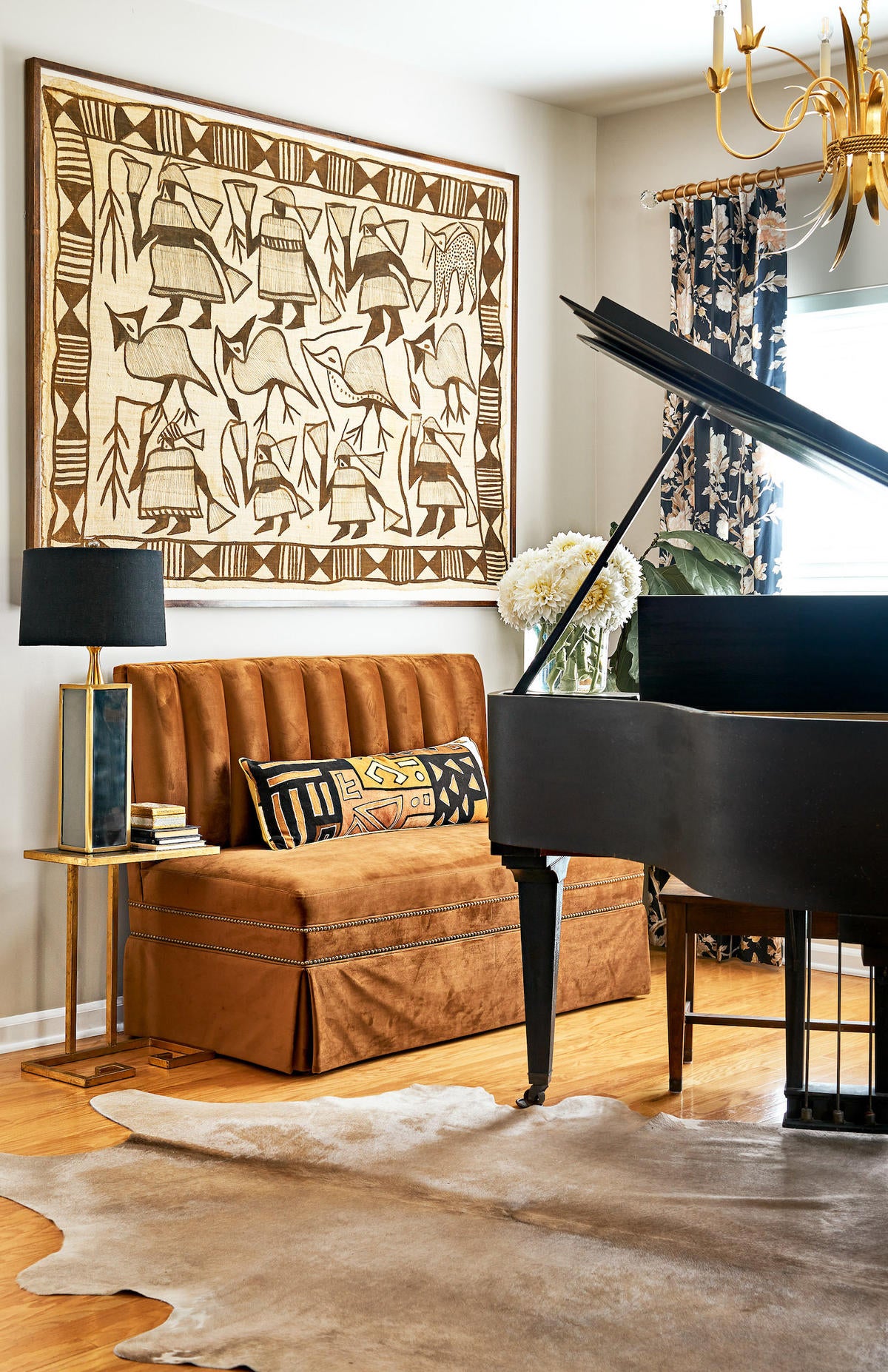
As your firm has grown, have you changed the way you approach billing and talk about money with clients?
I probably was more comfortable with that conversation than a lot of designers because of my work history, but I have changed the order in which I talk about it based on learned experience. We have a five-step process: The first step is the consultation, the second is the proposal phase, which is where I have what I call a “money meeting.” I don’t really call it that to clients—that’s back-of-the-house talk—but that’s where everybody who is contributing funds to this project is required [to attend]. That meeting is not, “Here is a pretty fabric.” It’s “Here’s our plan. For your home to look the way you told me you wanted it to look, and for it to function the way you told me it needs to function, this is what you need. This is where we want to place it. This is the list of items that we think we’re going to have to buy. This is how much we’re estimating they’re going to cost. Before we move forward, is that OK with you?”
You’re doing a lot of work before that meeting.
Right. In order for me to do that, it takes a long time—I have to plan it out, right? So you have to pay me before I do that. It’s a retainer. If I’m going to sit down and take time out of my busy schedule to figure out all the solutions for your home, then I need an upfront investment. If you decide that it’s not good for you, you’ve now got a blueprint for what Cheryl would have done—you can take it down to Crate & Barrel or Restoration Hardware and say, “I need a sofa, and it’s going to go right here. I need a rug because it’s going to go right here.” That’s fine. No hard feelings. I was paid for my time, you got a plan, and we part ways. If you decide to move forward, which I hope you do, then we just apply that retainer to my bill and we’re off and running.
You’re charging the retainer for the plan, not for the scheme.
Yes, for the plan. I learned after a year or two that, Wait a minute—I’m doing all this work and people are not always moving forward. That’s not working for me. So now we go into the consultation, and they pay us for that, and we say, “This is the next step. Do you want to move on?” If they say yes, then I say, “OK, pay me this retainer fee, and then we’re going to get to work and solve all the problems you outlined for us. We’re going to come back to you and present our solutions and a needs list of everything we need to purchase, and an estimate of how much it’s going to cost, and then how much my fee is to do the work.” If they move on, we apply what they’ve already paid, and we collect the rest.
Is it the same fee for everybody, or how does that calculate?
It’s scaled. If I’m coming to do one room, then that retainer is a little smaller than if I’m doing a whole-home project. We have a minimum retainer, but after that, it’s not all black-and-white. They might have a renovation that they want me to consult on in addition to decorating several rooms. I have to figure out how long it is realistically going to take me to put this proposal together. Then that’s what the fee is based on.
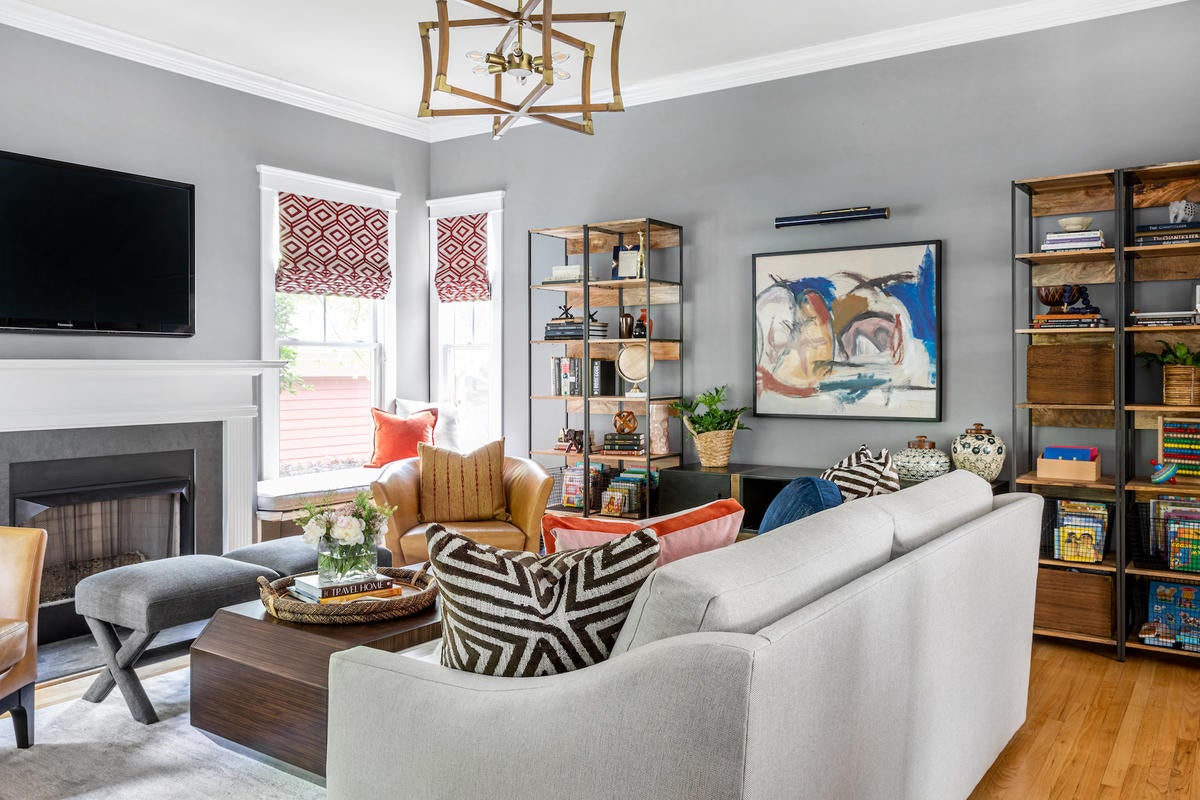
How does that change your relationship with clients in the early phases of the project?
Keep in mind, all of this is relative to who you’re serving. I know who I’m serving: people who are like me. They have a corporate background, and both parties work, so they’re busy. They want somebody who’s going to take the reins and who seems competent, in control, trustworthy, professional. They like that the process is streamlined. That’s who I’m serving.
I think sometimes designers get caught up in what other people are doing without considering who their own audience is. What you do has to be determined by who you’re serving. So I know that my people appreciate upfront, streamlined, concise and professional, and that’s what I give them. I have not had one person say, “I don’t know about paying you to do this proposal,” because a lot of it makes sense, right? I’m going to spend a lot of time figuring out what to do with your weird window situation.
Are there clients who are still surprised when they see what the costs will be?
I judge my effectiveness on the answer to that question. When I first started doing this, there were more people flipping through than I wanted. Now, on my discovery call, I have a script. As long as I’ve been doing this, I still have a script. I print out the script. I take notes on the script. I put check marks next to something once I’d said it, because if you do this enough, you’re like, “Did I tell her that? Did I mention how much?” So I’ll literally go down the list.
But what I want to do on that call is give people a roundabout number. I can say, “We know from experience how much our living rooms typically run when we have to purchase these things. You can expect to pay A to Z.” If they say, “Oh, whoa, that’s way more than I expected”—now, hopefully we’ve [deterred] some of those people when they went to our website, but sometimes they’ll check that number and think they’re going to get way more than they’re actually going to get. It’s important for me to say, “Look, living rooms run about this. Bedrooms—I know you think the bedroom is smaller than the living room, but these bedrooms these days are huge, so they’re going to be about this.” That gives them a frame of reference so that when we sit down at the money meeting, I’m not coming out of left field.
They’ve heard that number before, and it didn’t scare them away.
Yes. So maybe they’re still like, “We’re not going to be able to do the whole house,” but it’s “We’re going to do half the house this year and half the house next year.” I do have a lot of [clients] who phase out the work. I mean, I’m literally starting phase four with one client now—she just won’t let me leave! She started calling me because of a bathroom renovation, and when we got there, she was like, “Well, I think I might freshen up the bedroom, too.” That became a bedroom, dressing room and bathroom renovation. Then she’s like, “I love it so much. Let’s do the living room, the part of the bath, the eat-in kitchen.” We’re about to do a photo shoot of that next week. Now she’s texted me, “This looks so good—I really need to do the dining room.” And I answered, “Yes, you do.”
I’ll say it—I’ll tell clients, “I’d rather you have two or three really great spaces that you can enjoy, and then I’ll come back later. We don’t have to do your whole home right now, but this is what it’s going to cost, and we’re not going to spread that out so you can get half-done rooms across your whole house.”
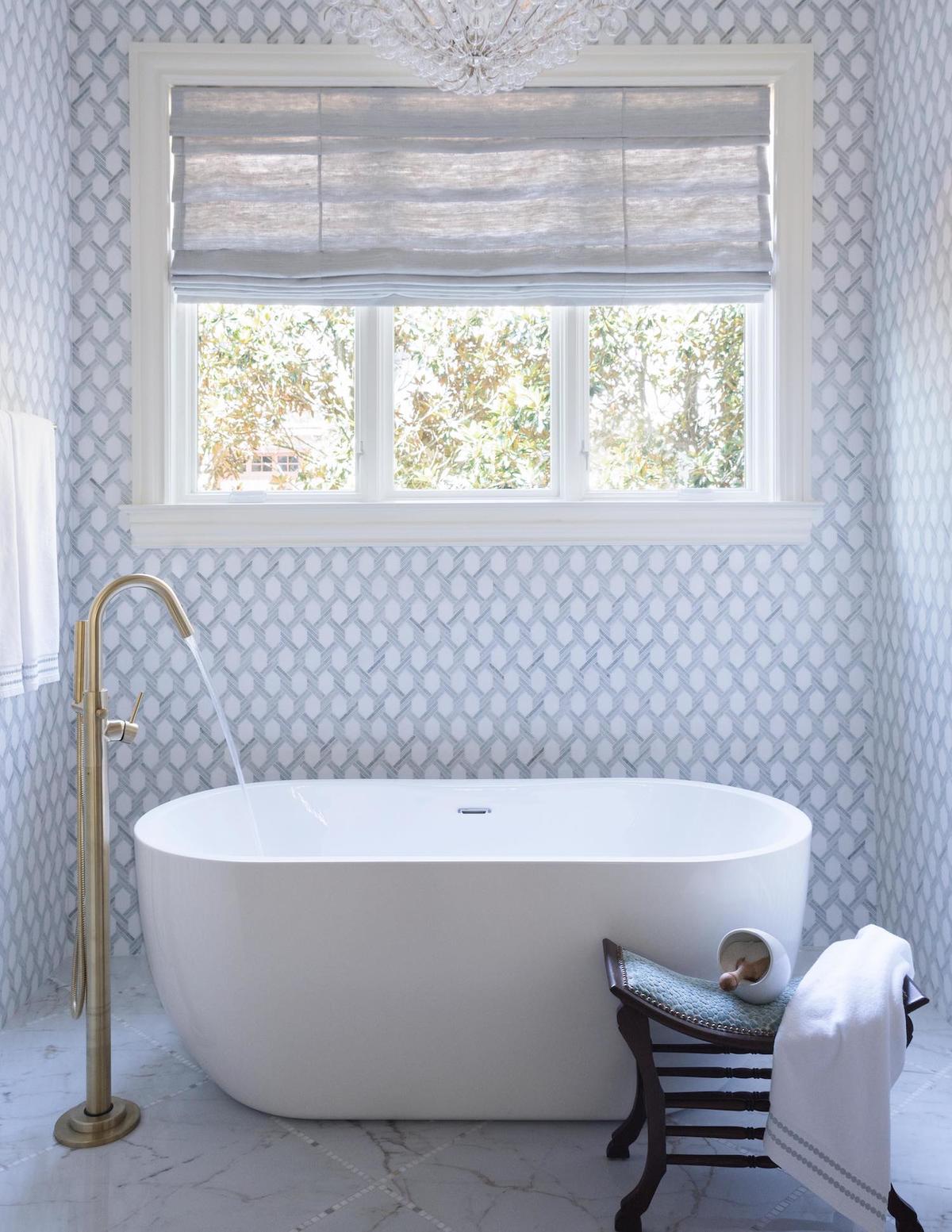
Can you tell me a little bit about the design scene in Charlotte?
The design community here is so supportive. They’re super helpful, and if I’m on a panel or I’m doing a launch, the Charlotte contingency usually shows up. I love that. I know other people could have different experiences, but from my vantage point, it’s pretty supportive.
The demographics here are also getting more and more diverse, which is exciting. A lot of families are moving here, and the housing market is fantastic. It’s kind of hard to find a house here at this point, which is great for our business. But I’ll say most of the people who I serve are transplants. I think we’re in that space in the South where it’s pretty “Northern Southern.” A lot of people are moving from the North, particularly the Northeast, and they usually stop somewhere here in North Carolina because it’s not so far and it’s not so different, but they can reap the benefits of the lower cost of living and more green space. We’re also not far from the beach or the mountains. The banking industry is here, and a lot of health care.
Do people come in having a different understanding of the furniture industry because you are so close to High Point?
Again, this depends on who you’re serving, right? I’m not serving North Carolina natives nine times out of 10. My clients are people who just relocated from Bank of America in New York to Bank of America in Charlotte, so they don’t have that understanding. And I don’t serve design enthusiasts, either—that’s not my clientele. Somebody else might completely have a different experience.
Does that proximity make your life easier?
I mean, I go shopping in Hickory and I pass all the vendor manufacturers. That proximity helps with shipping costs, and it helps how quickly you can get product. We are really in a sweet zone. I also feel like I have such great access to unique old things—I mean, this is furniture country, right? And it has always been furniture country, so even in terms of what’s available vintage ...
People always had good stuff.
Yes, because they lived in North Carolina where the good stuff was made. I take it for granted, but I’ve been able to tour facilities where this stuff is made very easily on a random Wednesday. I’ve developed relationships with those brands, and I have brand ambassadorships because of those relationships and that proximity. So it really is a huge benefit to my business on multiple levels.
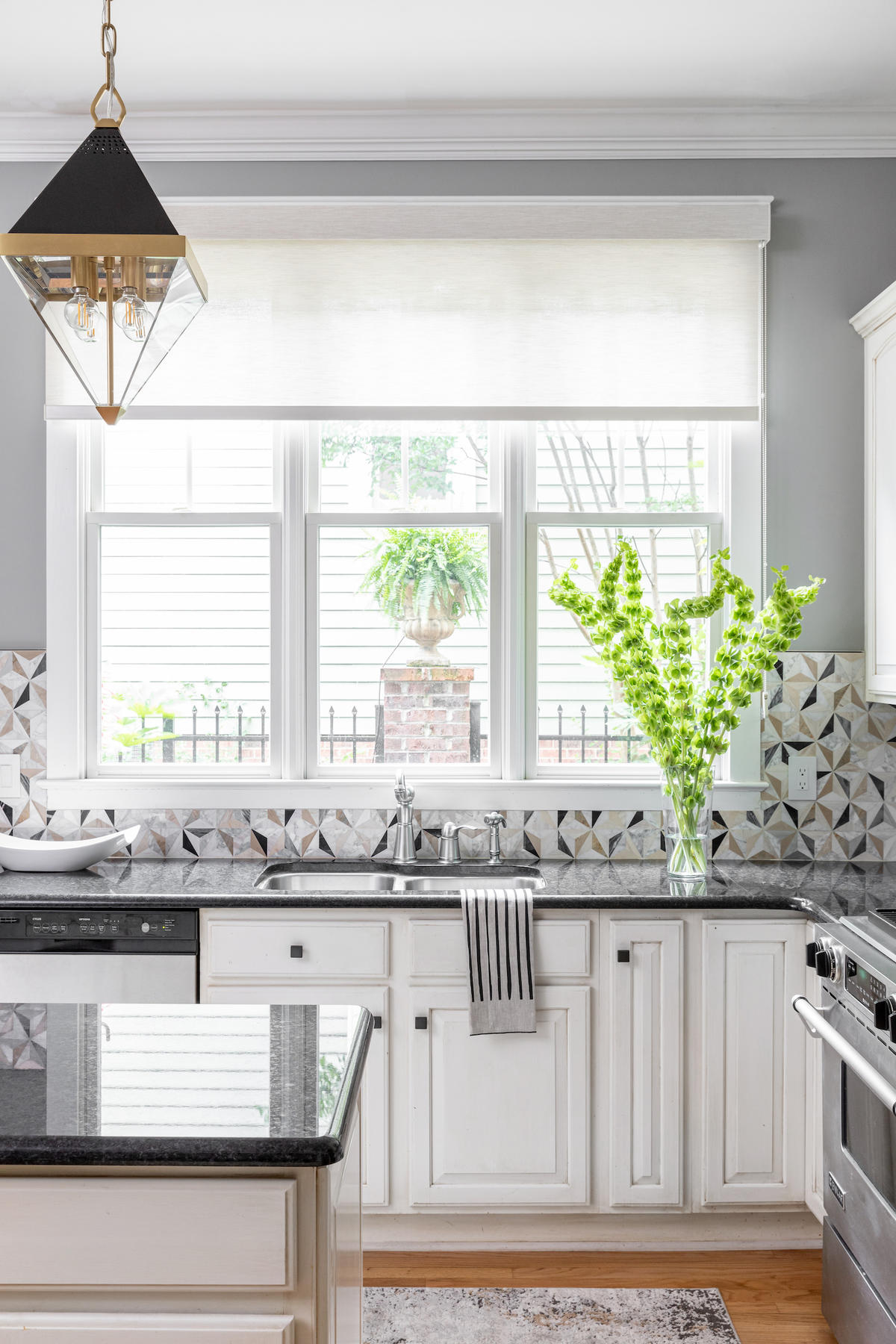
Where do you see opportunity to grow?
Last year, we were all in our houses, kind of panicky and not sure what’s going to happen. Going into the pandemic, we were doing good—2020 was off to a great start, and I talked to all the clients, who decided to keep ordering so that they’d be the first in the queue when the factories opened back up. But what were we going to do in the interim? I had always wanted to do education. I come from a family of educators—my dad was my middle school principal, my mom was a guidance counselor. I teach Sunday school, and I love teaching, but I never really had time to even consider that as a solopreneur and somebody with a small team—like, who’s got time for that? But the pandemic gave me some capacity.
I had a little time on my hands to create something for people who might want to spruce something up while they’re home, so we created a three-part class called Homeschool via Zoom. I think the bundle of modules was $99, but it wasn’t even about the money. I just feel like I needed to be doing something that would help people during this time. In a week, I had 100 people sign up. We got fabulous feedback. I taught them my philosophy, we went through pattern mixing, we went through those five steps that I use in my process to get a project from start to finish, and it was really well received.
Who was your audience here? Was this just clients, or was it designers?
It was Facebook and Instagram followers. This is homeowners, but definitely not clients. It was not people who would hire me—because remember, they’re busy.
This is new people.
Yes, these are people who were not my ideal clients in the real world—and they’re still not. They’re going to do it themselves, but they follow me for inspiration. The ones who think, “How does she mix those colors together? I’m going to use this template, then I’m going to take her picture and go to HomeGoods.” It was those people, and I’ve never served them before. Now I’ve got this group of 100 people who are showing up every Thursday night for three consecutive weeks to hear me talk about design. So even after things opened back up, it was like, “That’s an opportunity. I need to revisit that.” We hired a developer and we have put together Homeschool 2.0, which is going to launch in September.
We’ve completely retooled it. It’s a lot more professional than it was—instead of Zoom, it’s a web-based online training for homeowners, basically helping them create the space they have in their mind. I feel like that has been a great opportunity to build into something greater. It allows me to reach an expanded audience, and I think it’s going to have legs.
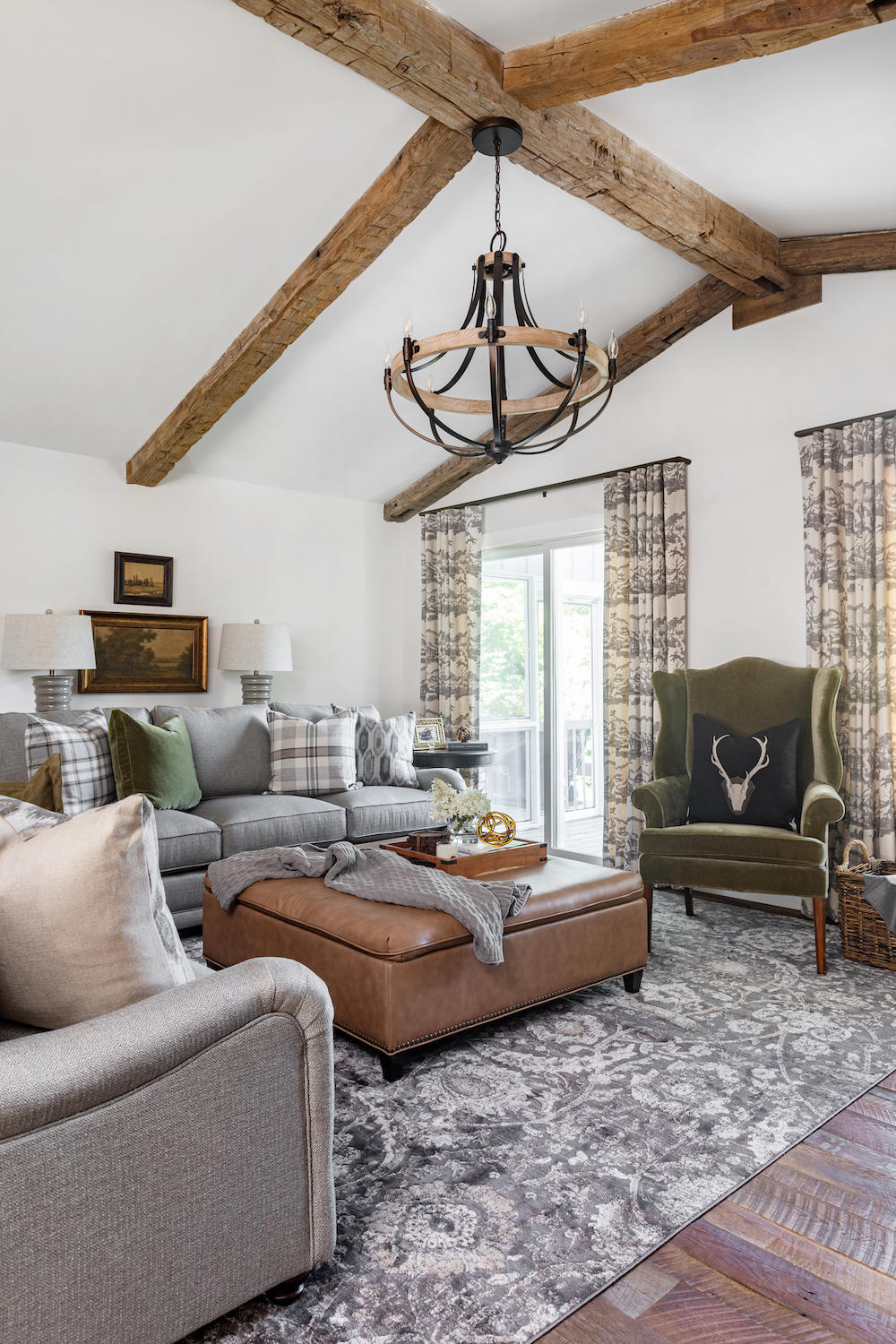
What is the biggest thing you wish you had known at the start of your business that you know now?
I wish I had known that I did not have to try and make everything work. Now, I feel like I’m very strong in my convictions about what I do, what I’m good at, and what I love. I don’t feel the need to have to do a backflip to make something work. In the beginning, I did feel that pressure—and it blew up in my face more than a few times, or made me more uncomfortable than I wanted to be. That’s what happens when you’re trying to do something outside of your domain or something that’s not what lights you up. I came to the realization that I left the job I was in because I wanted to create something that I love—so why would I come over here and feel compelled to do things that I don’t want to be doing?
Were there challenges of running your own business after so long in corporate that surprised you?
I’m very structured, and so I still have a hard time understanding that my work can be fluid. For example, let’s say I feel like the project I’m working with needs some depth and history, and I need to go find some things to add to the space that are going to be unique. I still feel a little guilty [going antiques shopping for that project], because to me, in my corporate mind, that doesn’t feel like work. Or let’s say I need to roam through a gallery to get some inspiration—I still feel a little guilty about that, too.
Just billing for that time?
Yes. For so long, work for me was sitting behind a computer or interfacing with co-workers and doing things that seem like “work.” That probably was the hardest adjustment for me. I actually still like the structure—I am still at my desk at 8:30 in the morning, and when I shut it down, I turn the email off. Like, literally off. I still have those boundaries, which I think is a great spillover from my corporate life. I’m too emotionally involved in my work, and it really jacked me up if I saw something that upset me on my time off—I might as well not even be off at that point—so I really have had to be vigilant about it. I’ve told my assistant, “If you see something, do not tell me.” My brain space is not available for work on Saturday.
What is success to you?
I get a lot of joy from helping people. Obviously, not for free—this is not a nonprofit—but I love every level. I’m skipping out of the house when I pick the right paint colors for somebody during a paint consult, or when somebody tells me, “I took your Homeschool class last year, and look what I’ve done.” Or, “The home office you did for me has inspired me to write my first book.” To me, that’s success. I don’t care how big the team gets or what my office studio looks like. I left my job and security so that I could do what I love, make an impact and help people.
To learn more about Cheryl Luckett, visit her website or find her on Instagram.





























